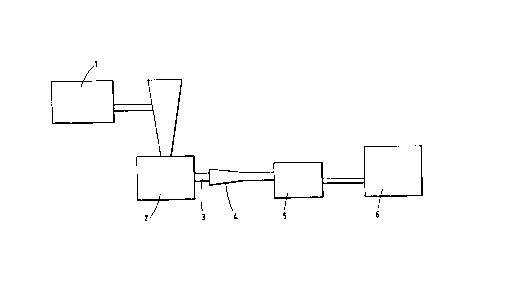Some of the information on this Web page has been provided by external sources. The Government of Canada is not responsible for the accuracy, reliability or currency of the information supplied by external sources. Users wishing to rely upon this information should consult directly with the source of the information. Content provided by external sources is not subject to official languages, privacy and accessibility requirements.
Any discrepancies in the text and image of the Claims and Abstract are due to differing posting times. Text of the Claims and Abstract are posted:
| (12) Patent: | (11) CA 2049027 |
|---|---|
| (54) English Title: | METHOD OF RECONSTITUTING MEAT PRODUCTS |
| (54) French Title: | METHODE DE RECONSTITUTION DE PRODUITS CARNES |
| Status: | Expired and beyond the Period of Reversal |
| (51) International Patent Classification (IPC): |
|
|---|---|
| (72) Inventors : |
|
| (73) Owners : |
|
| (71) Applicants : | |
| (74) Agent: | MARKS & CLERK |
| (74) Associate agent: | |
| (45) Issued: | 1999-06-15 |
| (86) PCT Filing Date: | 1990-03-07 |
| (87) Open to Public Inspection: | 1990-09-09 |
| Examination requested: | 1997-02-18 |
| Availability of licence: | N/A |
| Dedicated to the Public: | N/A |
| (25) Language of filing: | English |
| Patent Cooperation Treaty (PCT): | Yes |
|---|---|
| (86) PCT Filing Number: | PCT/GB1990/000344 |
| (87) International Publication Number: | WO 1990010393 |
| (85) National Entry: | 1991-09-06 |
| (30) Application Priority Data: | ||||||
|---|---|---|---|---|---|---|
|
A method is provided of reconstituting meat products
which comprises mixing with a de-boned or separated meat
(D or S meat), a fibrous collagen in order to distribute
the added collagen substantially homogeneously throughout
the D or S meat, removing occluded air and voids from the
mixture and forming the mixture into discrete portions or
a continuous extrusion by pressing the mixture through a
restrictor. Normally between 1 and 10% of fibrous
collagen is incorporated in the reconstituted meat
product.
Procédé de reconstitution de produits carnés consistant à mélanger avec la viande désossée ou séparée (viande D ou S), un collagène fibreux afin de répartir le collagène de manière homogène dans la viande D ou S, à éliminer les poches d'air et les vides dudit mélange, et à donner à ce dernier la forme de parties discrètes ou à lui faire subir une extrusion continue par pression dudit mélange dans un restricteur. On ajoute normalement 1 à 10 % de collagène fibreux dans le produit carné reconstitué.
Note: Claims are shown in the official language in which they were submitted.
Note: Descriptions are shown in the official language in which they were submitted.

2024-08-01:As part of the Next Generation Patents (NGP) transition, the Canadian Patents Database (CPD) now contains a more detailed Event History, which replicates the Event Log of our new back-office solution.
Please note that "Inactive:" events refers to events no longer in use in our new back-office solution.
For a clearer understanding of the status of the application/patent presented on this page, the site Disclaimer , as well as the definitions for Patent , Event History , Maintenance Fee and Payment History should be consulted.
| Description | Date |
|---|---|
| Inactive: IPC expired | 2023-01-01 |
| Inactive: IPC deactivated | 2016-03-12 |
| Inactive: IPC deactivated | 2016-03-12 |
| Inactive: IPC from PCS | 2016-01-09 |
| Inactive: IPC from PCS | 2016-01-09 |
| Inactive: First IPC from PCS | 2016-01-09 |
| Inactive: IPC expired | 2016-01-01 |
| Inactive: IPC expired | 2016-01-01 |
| Inactive: IPC from MCD | 2006-03-11 |
| Time Limit for Reversal Expired | 2004-03-08 |
| Letter Sent | 2003-03-07 |
| Grant by Issuance | 1999-06-15 |
| Inactive: Cover page published | 1999-06-14 |
| Pre-grant | 1999-03-05 |
| Inactive: Final fee received | 1999-03-05 |
| Notice of Allowance is Issued | 1998-09-08 |
| Letter Sent | 1998-09-08 |
| Notice of Allowance is Issued | 1998-09-08 |
| Inactive: Application prosecuted on TS as of Log entry date | 1998-09-02 |
| Inactive: Status info is complete as of Log entry date | 1998-09-02 |
| Inactive: Approved for allowance (AFA) | 1998-07-23 |
| All Requirements for Examination Determined Compliant | 1997-02-18 |
| Request for Examination Requirements Determined Compliant | 1997-02-18 |
| Application Published (Open to Public Inspection) | 1990-09-09 |
There is no abandonment history.
The last payment was received on
Note : If the full payment has not been received on or before the date indicated, a further fee may be required which may be one of the following
Please refer to the CIPO Patent Fees web page to see all current fee amounts.
| Fee Type | Anniversary Year | Due Date | Paid Date |
|---|---|---|---|
| MF (application, 8th anniv.) - standard | 08 | 1998-03-09 | 1998-01-07 |
| MF (application, 9th anniv.) - standard | 09 | 1999-03-08 | 1999-02-11 |
| Final fee - standard | 1999-03-05 | ||
| MF (patent, 10th anniv.) - standard | 2000-03-07 | 2000-03-03 | |
| MF (patent, 11th anniv.) - standard | 2001-03-07 | 2001-03-05 | |
| MF (patent, 12th anniv.) - standard | 2002-03-07 | 2002-02-25 | |
| MF (application, 2nd anniv.) - standard | 02 | 1992-03-09 |
Note: Records showing the ownership history in alphabetical order.
| Current Owners on Record |
|---|
| STORK FIBRON B.V. |
| Past Owners on Record |
|---|
| JAMES WILLIAM LEONARD FRENCH |
| LAMBERTUS GERADUS MARIA KLAASSEN |